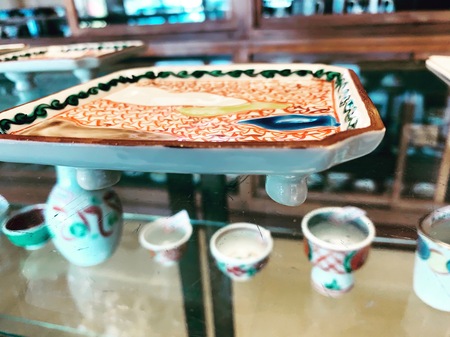建築の感触vol.2
感触は人によって感じ方が違うこともあるだろうから、モノ自体が持つ感触だけではなく、人が介在するコトにより得られる感触もあるだろう。だから、感触を直に扱うことによって人のアクティビティーにも関与できることになる。
それが食器や家具などでは、もともと人が直に使い触れるモノであるので、そこには何か目的がありアクティビティーがあって使い触れる訳だから、特に意識しなくても、感触があるのが当たり前のことだが、建築ではそれが当たり前では無い。
食器や家具と同じように建築も人が使うモノで、そこにアクティビティーが発生はするが、食器や家具と違って直に触れる所は限られている。
建築の場合、感触は触れるのではなくて、見た目で判断するコトなのだ。
人は実際に何かモノに触れる前に、そのモノの感触を過去の経験から推測する。その推測と実際の感触が合っていれば、感触自体が印象に残ることは少ないだろうが、違っていると、感触そのものに注意が行き、そのある種の違和感がそのモノの印象まで左右する。よって、感触もデザインの要素として扱える。
だから、人のアクティビティーにも関与でき、デザインの要素として扱える感触を建築に取り入れたいのだが、というか、感触で成り立つ建築を構想してみたいのだが。
触れること無く、見た目で感触を扱い、それで成り立つ建築を構想するとなると、先程の経験値からの推測と実際の感触との違和感を利用するしかないか。それでも触れないとだめだが、逆に、見た目の感触に経験値からくる既視感が無ければ、人は触らずにはいられないのではないか。
推測と見た目の感触が一致していそうならば安心で安全、不一致していそうならば、今までに経験したことが無く、見たことも無いから不安で安全かどうかを確かめたくはならないか、そこでアクティビティーが発生するのでは。
だとしたら、実際に触れるかどうかは関係無く、感触をデザインの要素として扱えるかもしれない。
"Feel of architecture vol.2"
Since feeling may be different depending on the person, there may be not only the feel of the thing itself but also the feeling obtained by the person intervening. Therefore, by directly treating the feel, it will be able to participate in human activities as well.
Since it is a thing that people can use directly in dishes and furniture in the dishes and furniture, there is something purposeful, there is activity and there is a touch to use, so it is natural that there is feeling without special consciousness As for that, in architecture it is not commonplace.
Like dishes and furniture, architecture is a thing that people use, and activities occur there, but places to touch directly unlike dishes and furniture are limited.
In the case of architecture, the feel is not touched, it is a judgment to judge by appearance.
Before a person actually touches something, he / she deduces from the past experience the feel of the item. If the guess is in agreement with the actual feeling, it is unlikely that the feeling itself will remain in the impression, but if it is wrong, attention is paid to the feeling itself, and that kind of sense of incompatibility also affects the impression of the thing . Therefore, the touch can also be treated as an element of design.
Therefore, although I would like to incorporate the feeling that can be involved in human activities and can be treated as elements of design into architecture, I would like to conceive a building that is made up of a feel.
If we treat the appearance and feel as if it is not touched, and plan to build with that, we only have to use the feeling of incompatibility between the speculation from the previous experiential value and the actual feeling. Even so, it is useless to touch them, but on the contrary, if there is no sense of dementia coming from the experience value in the appearance feeling, people can not stop being touched.
If it seems that the feelings of inference and appearance seem to be consistent, if you feel secure, safe, unmatched, you have never experienced before and you have not seen it, so you do not want to check whether it is anxious and safe, So the activity will occur.
If so, regardless of whether it actually touches or not, perhaps the feel may be treated as an element of design.


コメント